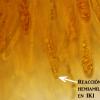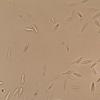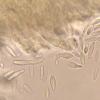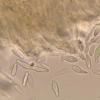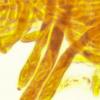
08-12-2025 21:04
Mark Stevens"Hello everyone,I'm relatively new to microscopy (

08-12-2025 18:59
 Lothar Krieglsteiner
Lothar Krieglsteiner
.. found by a seminar-participant, I do not know t

08-12-2025 17:37
 Lothar Krieglsteiner
Lothar Krieglsteiner
20.6.25, on branch of Abies infected and thickened

07-12-2025 16:07
Arnold BüschlenHallo, ich habe in einer Moos-Aufsammlung (epiphy

16-03-2014 22:00
Hello,I found this species a few months ago but ha

08-12-2025 13:39
Thomas Læssøehttps://svampe.databasen.org/observations/10572899

05-12-2025 17:33
 Bruno Coué
Bruno Coué
Bonjour, je serais heureux de recueillir votre avi
 Buenas tardes a todos.
Buenas tardes a todos.Ascomas de hasta 3mm , copulado y pedicelado. Himenio liso de color amarillo anaranjado, parte exterior con abundantes pelos decolor blanco. en ramas de Cedrus a 900m.
Esporas cilindrico fusiformes, lisas. Ascas de 52-75 x 5-6 um, irregularmente biseriadas, amiloides con KOH + mezler, Lugol - . Parafisis filiformes, que sobresalen de las ascas con contenido granular amarillento, septadas y ramificadas en la base. Pelos cilindricos hialinos y septados.
Creo que se trata de Lachnellula subtilissima. Que pensais vosotros?
Gracias por adelantado
Javier
Good evening to all.
Ascomas of up to(even) 3mm, copulated and pedicelado. Smooth Himenio of yellow orange color, exterior(foreign) part(report) with abundant hair decolor white(target). In Cedrus's branches to 900m.
Spores cylindrical fusiformes, smooth. Ascas of 52-75 x 5-6 um, irregularly biseriadas, amiloides with KOH + mezler, Lugol-. Filiform Parafisis, which stand out of the ascas with granular yellowish content, septadas and branched out in the base. Cylindrical hair hialinos and septados.
I believe that it is a question of Lachnellula subtilissima. That pensais you?
Thank you in advance
Javier


yes, I agree. The photo of asci in iodine, you pretreated with KOH. But in Luigol directly you should get a distinct though a bit dirty red-brown reactrion.
Zotto

Se me olvido poner la medida de las esporas 6- 8 (10) x 2-3 y decir que todas las medidas se hicieron con agua. Aunque la medida de las ascas de mi recolección son algo mas grandes, por lo demás parece que encaja bastante bien con la descripción que envias.
Saludos
Javier
Thank you Alesio.
It(He,She) forgets to put on the measure of the spores 6-8 (10 x 2-3 and to say that all the measures were done by water. Though the measure of the ascas of my compilation they are some kind of big mas, for the rest it seems that enough good fits with the description that envias.
Regards
Javier

Se han cruzado los mensajes, mirare de nuevo como es la reacción con Lugol, aunque en una preparación anterior no consegui el resultado que me indica.
Saludos
Javier
Thank you Zotto.
The messages have crossed, I will look since(as,like) it is the reaction with Lugol though in a previous preparation not consegui the result that indicates me.
Regards
Javier

Zotto

Subo una foto de la reacción en IKI de los ascos de Lachnellula subtilissima. Es discreta pero se aprecia.
I post a picture showing the reaction of the asci of Lachnellula subtilissima when you add IKI. It´s a faint reaction but it can be seen.
Zotto: In your key I read 2-3 RR/Rb for L. subtilissima, does it mean you cand find collections with RR reaction and also collections with Rb reaction?
Thanks y un saludo,
Raúl

Zotto

Gracias Raúl, por la imagen pensaba que seria algo mas evidente, a ver cuando tengo un momento y puedo hacer alguna preparación a ver si consigo observarlo
Saludos
Javier
Thank you Zotto, I am starting studying the Discomycetes, have a doubt, the measure of the ascas in water deberia be mas long that the one that I have sent?
Thank you Raúl, for the image was thinking that serious a little evident mas, to seeing when I have a moment and can do some preparation to seeing if I manage to observe it
Regards
Javier

Zotto

Raúl

If you have a gradient in the preparation and enough asci you can photograph blue and red rings in one pic.
Zotto

Sometimes I also take videos of KOH entrance after IKI. I attach one of Arachnopeziza aurelia, RB in this case, but a RR reaction would fade first to blue and then colourless in the same way?
Raúl

I see only blue on your video, cannot see KOH-entrance. Why you say RB?
When adding KOH to an RR-reaction the reaction disappears without blue, I predict.
Zotto

I reduced too much the video in the previous upload, here a bit longer.
Thanks for the answer.
Raúl

Muy interesantes y didacticos vuestros comentarios, por mi parte yo no consigo ver en ninguna preparación el rojo en las ascas con Lugol. Adjunto fotos de esporas, donde creo que se ve esporas germinadas y conidios. No se si esto puede aclarar algo para determinar la especie, siento no poder aportar mas pero yo soy bastante novato.
Saludos
Javier
Very interesting and didactic your comments, for my part I do not manage to see in any preparation the red one in the ascas with Lugol. I attach photos of spores, where I believe that one sees germinated spores and conidios. Not if this can clarify something to determine the species(kind), I am sorry not to be able to reach mas but I am raw enough.
Regards
Javier

Pues las fotos que mandas son muy buenas por lo que deberías apreciarlo con el microscopio que usas. Sólo se me ocurre que el IKI que utilizas sea fuerte. Ocurre a veces que es difícil de apreciar porque el contraste del rojo con el rojo-marrón-amarillo del IKI es muy limitado y además llega un momento en el que el IKI gana a la reacción ocultándola. Otra posibilidad es que tu IKI sea flojo, pero por lo menos deberías haber visto azul si es del tipo RB. Y si es una reacción RR, el rojo aparecería con una concentración de iodo por encima de 0,03-0,2 % (http://www.gbif-mycology.de/HostedSites/Baral/IodineReaction.htm). Te sugiero disgregar la preparación hasta encontrar un asco solitario sin nada por debajo, entonces debería ser más fácil distinguir entre el color del IKI y la reacción hemiamiloide.
But the pictures you send are very good so you should see it with the microscope you use. I only wonder that your IKI is strong. Sometimes it is difficult to appreciate because the contrast between red and reddish-brown-yellow of IKI is very limited and also you get to a moment where the IKI wins overstaining all and hidding the reaction. Another posibility is that your IKI is weak, but at least you should have seen blue if it is RB type. And if it is a RR reaction the red will appear over 0,03-0,2 % iodine concentration (http://www.gbif-mycology.de/HostedSites/Baral/IodineReaction.htm). I suggest to disgregate the preparation till you find an ascus without anything bellow, then should be easier to distinguish between IKI colour and the hemiamyloid reaction.
Saludos,
Raúl

Gracias y saludos
Javier
Thank you Raúl, already I have tried all the ways, also I have looked ascas alone and there is no way, it is possible that the not this IkI in good conditions, I am going to buy again, there is some concentration mas suitable that different?, In spite of not having observed the reaction hemiamiloide podria to say that it is a question of Lachnellula subtilissima.
Graces(Thanks) and regards
Javier

Zotto

Hola Zotto, no he conseguido ver el rojo en ninguna de las preparaciones, seguro que el IKI esta en mal estado, cuando lo reponga volvere a intentarlo.
Muchas gracias
Javier
Hello Zotto, I have not managed to see the red one in any of the preparations, insurance that the IKI this one in poor condition, when it(he,she) re-sets it volvere to try(mean) it.
Thank you very much
Javier

finalmente he conseguido la reacción hemiamiloide con IkI, el tipo de reacciónque veo es RR.
Ya se puede decir
que es Lachnellula subtilissima?
Saludos
Javier
Hello again,
finally I have obtained the reaction hemiamiloide with IkI, the type of
reaction that I see is RR.
Already is it possible to say that it is Lachnellula subtilissima?
Regards
Javier

Yes, for me L. subtilissima.
Raúl


Gracias Alessio por el documento.
Saludos
Javier



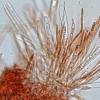
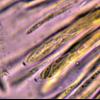


 LACHNELLULA-0001.pdf
LACHNELLULA-0001.pdf